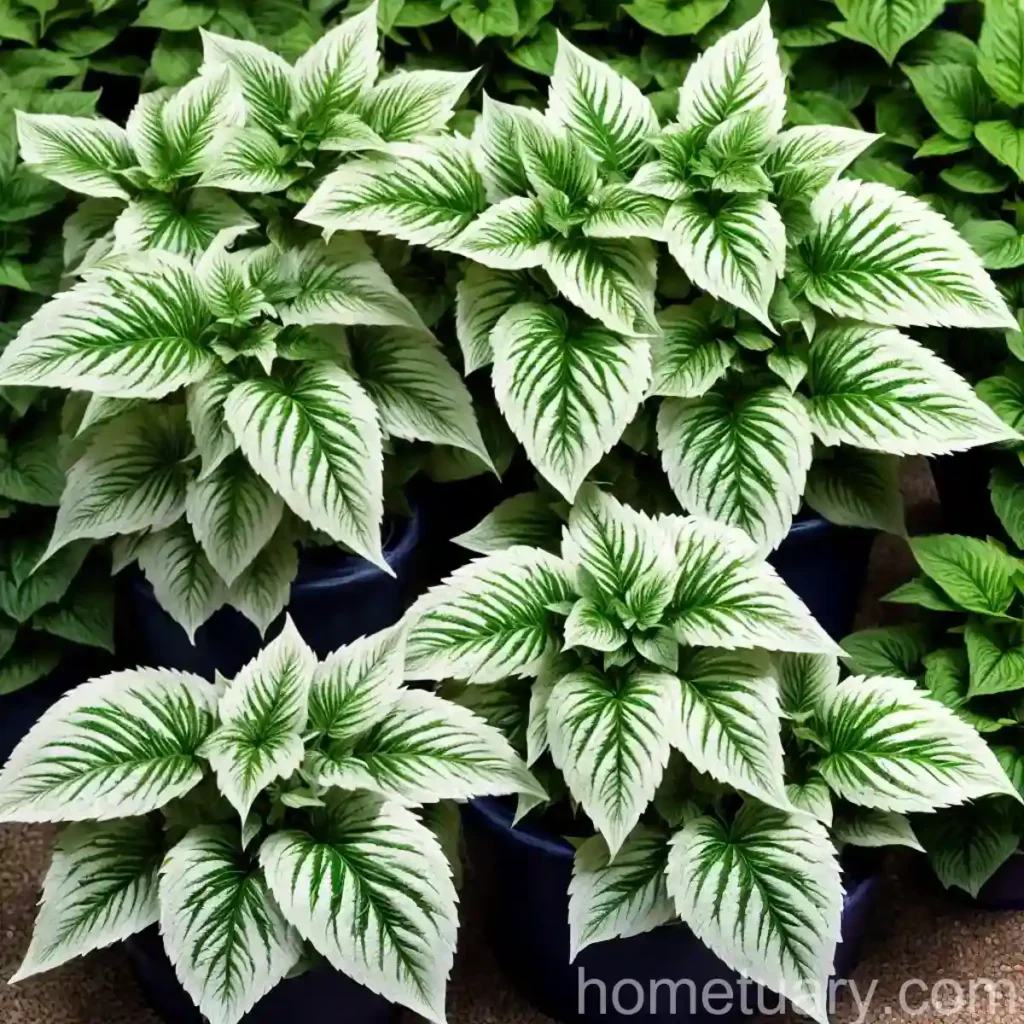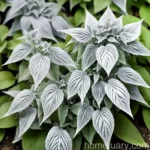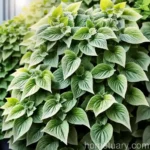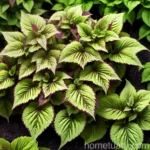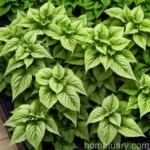Coleus (Plectranthus scutellarioides): A Comprehensive Guide
The coleus plant, scientifically known as Plectranthus scutellarioides, is a stunning and versatile plant that has gained popularity for its vibrant foliage and easy-care nature. This comprehensive guide will explore the key aspects of coleus plant care, its cultural significance, uses, propagation methods, common diseases and pests, and much more. Whether you are a novice gardener or an experienced plant enthusiast, this guide will provide valuable insights into the world of coleus plants.
What is Coleus (Plectranthus scutellarioides)?
The coleus plant, belonging to the Lamiaceae family, is a tropical perennial that is prized for its colorful and variegated leaves. Native to Southeast Asia and parts of Africa, coleus is cultivated for both indoor and outdoor settings, adding vibrant splashes of color to gardens, landscapes, and interiors. The plant exhibits a wide range of leaf shapes, sizes, and color patterns, making it a popular choice for ornamental purposes. The botanical name of coleus, Plectranthus scutellarioides, reflects its close relation to the genus Plectranthus and its characteristic shield-shaped (scutellum) seeds.
Key Takeaways – Coleus (Plectranthus scutellarioides)
- Scientific Name: Plectranthus scutellarioides
- Family: Lamiaceae
- Common Names: Coleus, Painted Nettle
- Growth Habit: Herbaceous perennial
- Foliage: Variegated, colorful leaves
- Uses: Ornamental, medicinal, culinary
- Native Range: Southeast Asia, Africa
Now, let’s deep dive into the various aspects of coleus plant care, including its cultural significance, uses, propagation techniques, common diseases, and essential growing tips.
Culture
Water
Coleus plants require consistently moist soil to thrive, but they are susceptible to root rot if overwatered. It is essential to strike a balance by ensuring proper drainage to prevent waterlogging while keeping the soil consistently moist, especially during the growing season. When watering coleus, aim to moisten the soil evenly without creating waterlogged conditions.
Sunlight
Coleus plants exhibit a remarkable tolerance for diverse light conditions, but they truly thrive in partial shade or dappled sunlight. While they can handle some direct sun, prolonged exposure to intense sunlight may cause the leaves to scorch and lose their vibrant coloration. Therefore, providing filtered sunlight or partial shade is ideal for promoting the best foliage display.
Fertilizer
To support robust growth and vibrant foliage, coleus plants benefit from regular fertilization during the growing season. Choose a balanced, water-soluble fertilizer and apply it according to the manufacturer’s instructions. Avoid over-fertilizing, as excessive nutrients can lead to leggy growth and diminished leaf coloration.
Soil
Well-draining, nutrient-rich soil is crucial for cultivating healthy coleus plants. A mix of high-quality potting soil and organic matter, such as compost or peat moss, provides an ideal growing medium. Additionally, maintaining slightly acidic to neutral soil pH (6.0-7.0) is optimal for coleus cultivation.
Pruning
Regular pruning and pinching contribute to the overall vigor and bushiness of coleus plants. Pinching off the growing tips encourages lateral branching and creates a fuller, more compact plant. Additionally, removing any leggy or discolored stems helps maintain a vibrant and attractive appearance.
Propagation
Coleus plants can be easily propagated from cuttings, making it a simple and cost-effective way to expand your coleus collection. Follow these steps to propagate coleus from cuttings:
- Select a healthy stem with several pairs of leaves.
- Trim the stem just below a leaf node.
- Remove the lower leaves to expose the nodes.
- Place the cutting in a glass of water or a suitable rooting medium.
- Keep the cuttings in a warm, bright location and ensure the rooting medium remains consistently moist.
- After roots have developed, transplant the cuttings into individual pots or a suitable growing area.
Container Popularity
The adaptable nature of coleus plants makes them well-suited for container gardening. Their stunning foliage and compact growth habit allow them to thrive in various container sizes, from small pots to larger decorative planters. Whether used as standalone specimens or combined with other plants in mixed containers, coleus adds an instant pop of color and visual interest to any indoor or outdoor space.
Common Diseases
Despite being relatively low-maintenance plants, coleus can be susceptible to certain diseases, particularly under unfavorable growing conditions. Some common diseases that may affect coleus plants include:
- Powdery Mildew: A fungal disease that appears as a white, powdery coating on the leaves, stems, and flowers.
- Downy Mildew: This disease manifests as yellow or brown patches on the upper leaf surface, accompanied by grayish-white fungal growth on the undersides.
- Leaf Spot: Leaf spot diseases cause dark, water-soaked lesions on the foliage, leading to leaf yellowing and premature drop.
Disease Diagnosis
Timely diagnosis of diseases is essential for effective management and control. If you notice any abnormal symptoms on your coleus plants, such as unusual discoloration, spots, or wilting, it is crucial to inspect the plants carefully and seek proper diagnosis. Many plant diseases exhibit similar initial symptoms, so accurate identification is critical for implementing appropriate treatment measures.
Common Pests
Several common pests can pose a threat to coleus plants, potentially affecting their overall health and appearance. Some notable pests that may target coleus include:
- Aphids: These small, sap-sucking insects can cause stunted growth and distorted foliage, often congregating on the undersides of leaves.
- Spider Mites: These pests cause stippling and webbing on the foliage, leading to weakened plants and reduced photosynthetic activity.
- Whiteflies: Whiteflies are tiny, winged insects that feed on plant sap, resulting in leaf yellowing and reduced vigor.
Botanist’s Tips
- Variegated Beauty: Embrace the diverse array of coleus varieties, ranging from vibrant pinks and purples to deep greens and striking yellows. Experiment with different cultivars to create visually captivating displays.
- Seasonal Display: Utilize coleus plants as seasonal ornamentals, incorporating them into summer containers, autumn arrangements, and indoor displays to enjoy their beauty year-round.
Fun Facts
- The genus name Plectranthus is derived from the Greek words plektron (spur) and anthos (flower), referencing the spurred flowers characteristic of the genus.
- Coleus plants are not only visually appealing but also have a history of medicinal and culinary uses in traditional herbal medicine and cuisine.
Links to External Resources
For further information on coleus plant care, varieties, and cultivation techniques, explore the following external resources:
- University of Florida IFAS Extension: Coleus for the Home Landscape
- Missouri Botanical Garden: Plectranthus scutellarioides
- Royal Horticultural Society: Growing Coleus
- The Spruce: Coleus Plants – Growing and Caring for Coleus
In conclusion, coleus (Plectranthus scutellarioides) offers a captivating fusion of vibrant foliage, easy maintenance, and versatile applications, making it a beloved choice for plant enthusiasts and landscape designers alike. By understanding the vital aspects of coleus plant care, from watering and sunlight requirements to propagation and pest management, you can cultivate thriving coleus displays that showcase nature’s kaleidoscope of colors and patterns. Whether adorning your garden, balcony, or indoor spaces, coleus plants bring an enchanting allure to any environment.

